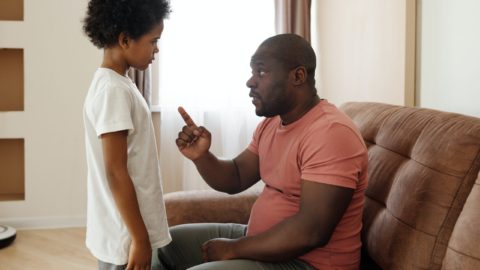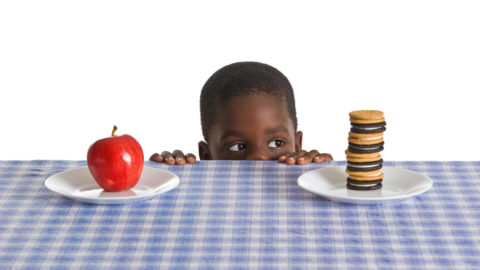Consider the effects of “guilt” on you and your family.
How many times have you asked yourself, “Am I a bad parent?”
Does struggling with parenting guilt and self-inflicted shame help answer that question?
You are not alone. Many of the parents I meet agree that carrying the weight of “guilt” is exhausting. They sometimes feel as if overcoming parental guilt is impossible, and as with all guilt, no one has ever said that holding onto their parenting guilt was helpful. In fact, these feelings make “parenting” even more exhausting.
The Effects of Parenting Guilt and Shame
In working with parents and caretakers, I’ve heard many stories about parenting guilt. I’ll share these with you now to help you understand the effects of guilt:
- “Every time I look at my kids I feel like a ‘bad’ parent because I have yelled at them, taken away their favorite toys to punish them, and avoided being with them as much as possible. It just makes me feel bad.”
- “The ‘guilt’ that I feel is just another burden on top of their bad behavior and feels like such a heavy weight. I don’t know what to do to make them behave. They are driving me nuts, and I’m afraid to do anything because I am not a good parent and don’t handle them well.”
- “Ever since that day when they ‘pushed me over the edge’ with their fighting and arguing and constant demands, I find that I am just waiting for the next explosion and then I feel like a bad parent because I don’t even want to be with my kids.”
Do any of these thoughts and feelings sound familiar to you?
There Are Alternatives to Guilt
Instead of “guilt,” use the suggestions below to take positive steps toward changing the situation between you and your kids.
- Think about the conflicts you have with your kids and consider how everyone involved contributes to the unhappy situations that occur.
- Cut yourselves some slack and realize that changing old patterns of behaving and interacting takes time and practice. Continue to practice positive parenting even if the results don’t come as quickly as you hoped.
- Think back to situations when conflicts occurred and identify the times that the solutions found worked for everyone. What did you say or do? How did your child respond so that the interaction was more positive?
Remember that your interactions with your children actually occur on two levels: “content” and “process.”
The “content” level is the topic you are arguing about. For example, if your child is refusing to put away his toys, the “content” level of the argument is about his refusal to do what you ask. If your teenager is borrowing the car and not returning home at the agreed-upon time, then the “content” of the argument is about him coming home late.
The “process” level is the feelings and needs that seem hidden but are often the actual cause of the behavior that leads to the conflict. “Process” is about the purpose of the behavior that causes conflicts between you and your children. Usually the argument has more to do with “control and power” and less to do with the actual “content” or subject.
Parents and children both need a sense of “control and power” in their lives. How can you meet this need for yourself and your child while still achieving the desired behavior?
A First Step Toward a Solution
Next time your child refuses to do what you ask, take a deep breath and remember the need for power and control. Help him feel like he is “in control” by offering him a couple of choices that are acceptable to you: “Would you like to put the toys in the cabinet now or just before you eat lunch?” The result is that you stay in control by deciding the choices, and he also feels in control because he can choose what he is going to do next.
Here’s another example: “Since you are done having lunch, please put your dishes in the kitchen sink. Do you want to clear the plate first or the napkin and the glass first? You can turn on the TV after the dishes are in the sink.” You might even offer to help your child if he is younger and be sure to thank him after cleanup is completed.
Here’s an example for an older child: “You agreed to be home by curfew time. You were late tonight. We’ll give it one more try, and I want you to know that from now on when you are home on time I will happily loan you the car again. When you are home after your curfew, then the car will not be available to you for a week (or whatever amount of time you decide). It’s your choice.”
A Second Step Toward a Solution
Our lives are very busy, and we often do not recognize those peaceful moments when our kids are quietly keeping themselves busy and/or doing what we asked. Practice noticing those times and go out of your way to praise your child for cooperating, for doing what you asked, for being helpful. Positive praise is a powerful parenting tool and the sooner you start to use it, the sooner you will able to reduce and perhaps reverse negative situations with your child.
A couple of examples:
“Wow, you are working so hard on building with Legos—good job!”
“Thanks for coming home on time last night. I appreciate your cooperation and really appreciate that I could go to sleep free of worry.”
Be Proactive, Not Reactive
Before additional behaviors might occur, be sure to always let your child/youth know in advance what the outcomes will be for his behavior choices:
“If you choose to put the Legos away when you are done playing then you can enjoy watching cartoons before dinner.”
If he refuses to clean them calmly let him know that, “The TV will stay off until the Legos are cleaned up.”
Surprising your child with unannounced outcomes will only increase the chance that he will want to “get even” or argue with you. Always calmly let him know in advance both the positive and negative outcomes that can occur as a result of his choices. Remember that your focus should be on showing him how he will benefit by doing what you asked him to do.
A Happy Ending: Solutions vs. Guilt
What would you rather focus on: preparing for arguments and bad behavior OR finding solutions to the conflicts that keep repeating—perhaps even before they happen?
Once you identify your goal and have seen some success, remember that changing behavior patterns takes practice, patience, and more practice. You and your child may sometimes fall back into those old patterns of arguing, but each time you will be better able to recognize what you can do to reverse the situation. You may even want to say out loud that, “The way we solved this problem last night made everyone feel good. Let’s work together to make that happen again.” You may ask your kid to suggest what might work and then arrive at a solution together.
Parenting is full of celebrations, and it is also full of hurdles. Enjoy the celebrations and prepare for the possible hurdles before they occur so you are ready to give a positive response.
Remember that the “guilt” you may feel about your parenting does not bring you one step closer to a solution. Put your time and energy into finding solutions rather than paralyzing yourself with the guilt and shame!













